Barnacles can sometimes be parasites. One example of a parasitic barnacle is Rhizocephalan, which mostly parasitizes decapod crustaceans such as crabs. In this article, I will discuss more in detail regarding these parasitic barnacles.
Are Barnacle Parasites?
Yes, barnacles can be parasites. While most people are familiar with the barnacles that cling to rocks, piers, and boats, some species of barnacles parasitize other crustaceans, such as crabs.
One example of a parasitic barnacle is the rhizocephalan barnacle, which has a particularly bizarre and highly specialized body plan. Rather than having a hard, stony shell like other barnacles, rhizocephalans are soft-bodied and lack appendages for clinging onto surfaces. Instead, they live inside their host crab, feeding on its tissues and disrupting its reproductive system.
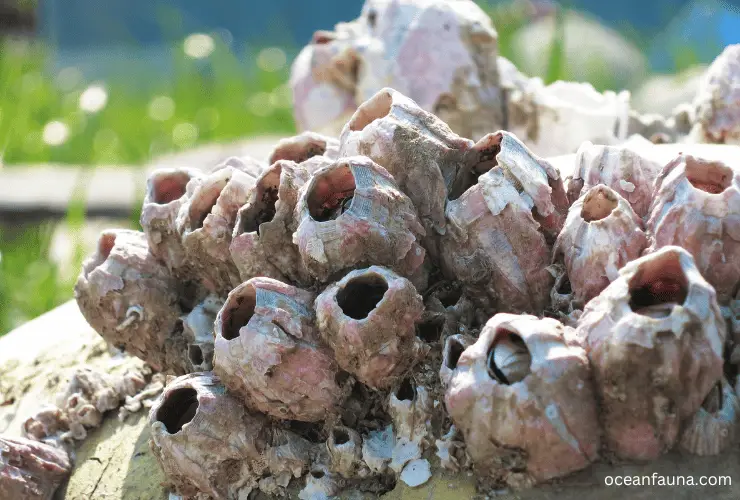
One particularly well-known genus of rhizocephalan barnacles is Sacculina, which is known for castrating crabs. When a female Sacculina larva encounters a crab, it burrows into the crab’s body and begins to grow long, stringy tendrils called rootlets that infiltrate the crab’s tissues.
Eventually, the parasite takes over the crab’s reproductive system, essentially turning the crab into a zombie that the barnacle completely controls.
Male crabs infected with Sacculina undergo a feminization process, ending up with female-like appendages and behaviors, while female crabs become sterile and spend their remaining time caring for the barnacle’s numerous egg sacs.
Also Read: What Do Barnacles Do? [Are They Harmful?]
Parasitic Barnacles
Parasitic barnacles are marine animals that infest other marine creatures, mainly crabs and alter their behavior and appearance. These barnacles are known for infiltrating and spreading throughout their host’s body, which can lead to severe health problems and reduced reproductive capacity.
One such parasitic barnacle, Sacculina, is a Thompsoniidae family member and Rhizocephala Genus member. This barnacle grows through the body of the host crab like a root system, producing tiny egg sacs (0.5cm or less) that emerge through the crab’s joints.
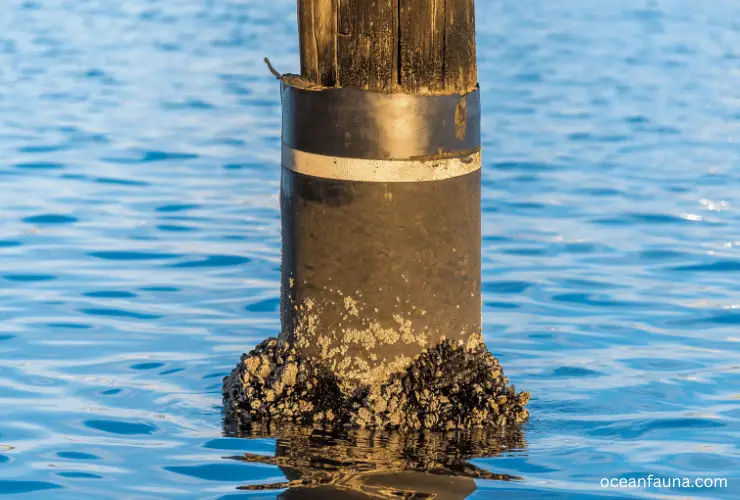
While the parasite does not kill the crab, it drastically affects its reproductive system, rendering it infertile.
Parasitic barnacles are classified as ectoparasites, as they attach themselves to the exterior of their host’s body. As the barnacle grows, it can alter the behavior of its host by changing its movements and reducing its desire to mate or feed.
In addition to Sacculina, other types of parasitic barnacles infest marine animals. For example, Loxothylacus panoply is a parasitic barnacle that infects mud crabs. It attaches itself to the crab’s abdomen and begins to grow, replicating the crab’s reproductive organs and eventually causing the crab to stop reproducing.
These barnacles have evolved a unique way of sustaining themselves. The parasitic barnacle has a robust reproductive system that allows it to produce and release thousands of eggs into the water. These eggs mature into small larvae that search for a host to infest. The larvae actively swim and track down potential hosts that are susceptible to infection.
Do Parasitic Barnacles Kill Their Host?
Parasitic barnacles do not typically kill their crustacean hosts but significantly reduce their commercial value. Parasitic barnacles, belonging to the class Cirripedia and order Rhizocephala, are unique parasites that have evolved a complex way of invading and manipulating the reproductive systems of crustaceans, especially crabs, shrimp, and prawns.
Parasitic barnacles infect the host by releasing free-swimming, infective larvae that probe the crustacean body and implant themselves onto the gills, carapace, or appendages.
Once attached, the larva transforms into a sac-like structure, called the kentrogon, that produces root-like extensions, called the rhizoids, that invade the host’s tissues and establish a network of blood vessels that hijack the host’s reproductive organs, namely, the ovaries in females and the testes in males.
The parasitic barnacle then operates as a castrator parasite, redirecting the host’s energy and nutrients toward the growth and maintenance of the barnacle’s own reproductive organs. As a result, the host’s gonads degenerate, and its reproductive capacity is severely reduced, rendering it sterile and unmarketable for commercial purposes.
Moreover, the parasitic barnacle’s reproductive sac, called the external, protrudes out of the host’s body and releases thousands of infective larvae, which can infect other crustaceans and perpetuate the cycle of parasitism.
Although parasitic barnacles do not instantly kill their hosts, severe infestation can lead to other deleterious effects, such as reduced immune function, altered behavior, and increased susceptibility to other infections.
Additionally, commercial fisheries can suffer significant losses due to the lower quality and quantity of parasitized crustaceans, which translates into lower profits and higher consumer prices.
What Do Parasitic Barnacles Eat?
Parasitic barnacles are known for feeding on the nutrients of their host organisms. These barnacles have adapted to live off the host by attaching themselves to the surface of their bodies, where they can easily access the nutrients required for their survival.
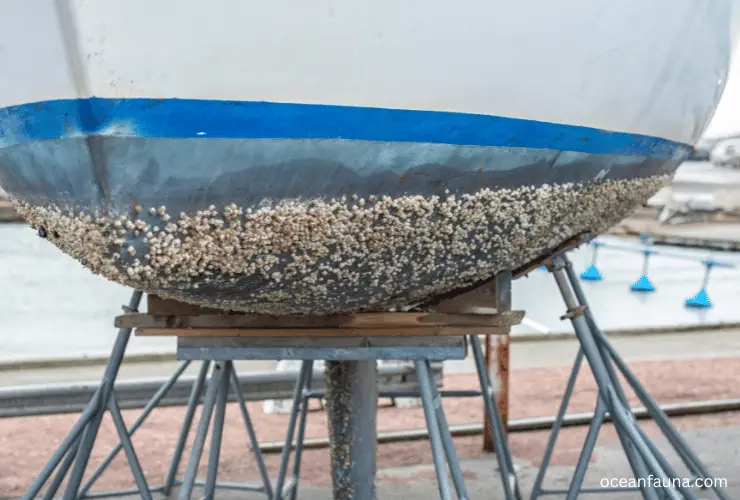
For example, Sacculina, a parasitic barnacle, feeds on crabs. This barnacle inserts a root-like structure into the crab’s body, allowing it to extract nutrients directly from the host’s circulatory system.
In doing so, the barnacle manipulates the crab’s behavior, causing it to focus solely on providing nutrients for the barnacle while neglecting its own needs. As a result, the host crab must eat constantly in order to produce enough energy for both itself and the parasite.
Another example of a parasitic barnacle is Anelasma squalicola, which feeds on sharks. This barnacle attaches itself to a shark’s skin and begins to drain the animal of its nutrients. Over time, the shark becomes weakened and vulnerable to predation, making it an easy target for other predators.
In both of these cases, parasitic barnacles have evolved to rely on their hosts’ internal systems to survive. By feeding on their host’s nutrients, these barnacles can thrive and reproduce, often at the expense of the host’s health and well-being.
Apart from parasitic barnacles, non-parasitic barnacles have different food habits. They usually feed on plankton. To know more in this regard, read our article on “What do barnacles eat?”
Barnacles on Sea Turtles: Are They Parasites?
Researchers and marine biologists have been studying barnacles on sea turtles for years. Even though they are not classified as parasites, they can harm turtles and behave like parasites if they grow too many.
Two types of barnacles are commonly found on sea turtles: gluing barnacles and embedding barnacles. The former attach themselves to the turtle’s shell with a strong adhesive, while the latter actually burrow into the turtle’s skin.
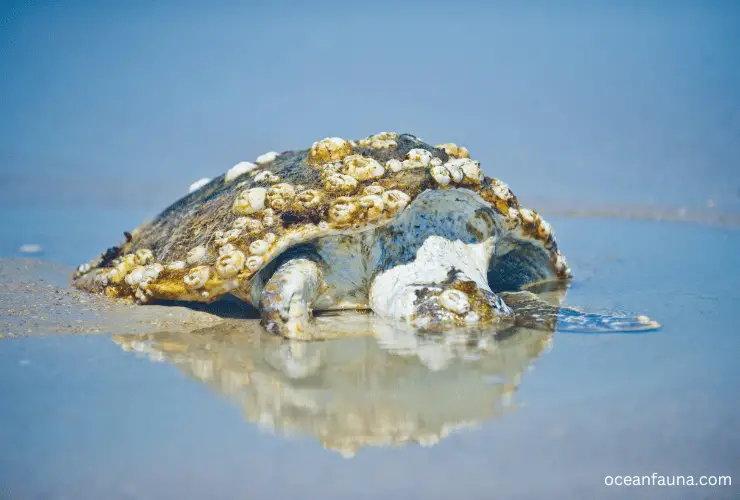
While small numbers of barnacles may not cause significant harm, larger numbers can lead to health issues and decreased mobility for the turtle.
Interestingly, the relationship between sea turtles and barnacles is somewhat symbiotic in nature. Barnacles benefit from their attachment to the turtle’s shell or skin, as they are provided with a stable environment and a steady supply of food particles and nutrients.
Sea turtles, on the other hand, may benefit from removing certain species of barnacles that can threaten their health.
While barnacles are not technically parasites, they do have the potential to cause harm to sea turtles. Researchers continue to study the interactions between these organisms to better understand their impact on the health and well-being of sea turtles.
Barnacles on Whales: Are They Parasites?
Although barnacles attach themselves to whales and benefit from this behavior, they are not considered parasites. Parasites are organisms that harm their hosts or feed on them to the detriment of the host, but barnacles do neither of these things. Instead, they enter into a commensalistic relationship with whales, receiving benefits without harming the host.
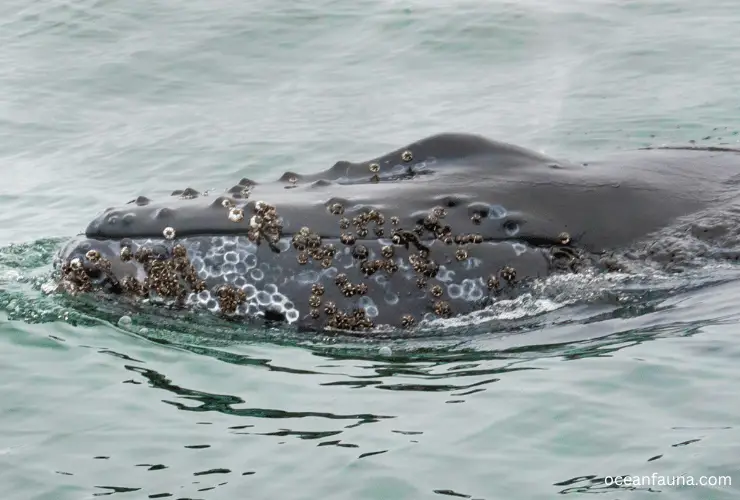
In the case of barnacles, attaching to the skin or shell of a whale provides them with a stationary habitat, a stable place to live, and a constant supply of food. The whales, conversely, are not directly affected by the presence of these small crustaceans.
While it might be argued that the added weight of the barnacles could slow down a whale’s swimming speed, this effect is negligible and unlikely to impact the whale’s overall health or survival.
In fact, the only negative impact barnacles might have on a whale is if they attach themselves in large numbers, thereby reducing the animal’s hydrodynamics. However, this occurrence is rare, and it is more likely that only a few barnacles will attach themselves to anyone whale.
Thus, barnacles are not parasites despite deriving benefits from attaching to whales. Rather, they are simply hitching a ride, and the relationship between barnacles and whales is considered to be commensalism.
While some might argue that barnacles provide an advantage to the helpful lice attached to the whales, this is not a parasitic relationship but rather another example of commensalism.
How Dangerous Is a Parasitic Barnacle?
Parasitic barnacles, also known as rhizocephalans, are notorious for their ability to infiltrate and manipulate their hosts’ reproductive and behavioral patterns. These parasites infect a wide range of marine invertebrates, including crabs, shrimp, and barnacles, and can cause significant harm to both the individual host and the surrounding ecosystem.
Reproductive Potential
Rhizocephalans are known for their astounding reproductive potential. Female parasites can produce thousands of eggs at a time, which they release directly into the water.
These eggs hatch into larvae, which infect a new host and begin the process all over again. This means that a single parasite can potentially infect thousands of hosts in its lifetime, causing widespread damage to the ecosystem.
Behavioral Potential
The parasitic barnacle’s ability to manipulate its host’s behavior is perhaps its most dangerous potential. After infecting a host, the parasite releases chemicals that affect the host’s neurological and hormonal systems.
This can cause significant changes in the host’s behavior, such as causing it to stop reproducing, abandon its young, or even commit suicide by drowning itself.
In some cases, the parasite can also manipulate the host’s movements and position itself for optimal nutrient absorption.
Overall Health Potential
The presence of parasitic barnacles on a host can have serious implications for both its immediate and long-term health. Many species of parasites are known to cause skin irritation and increased susceptibility to infection. In some cases, the parasitic barnacle may also deplete nutrients from its host, leading to malnourishment or even death.
How To Remove Parasitic Barnacles from The Host Body?
The manual removal of parasitic barnacles from a host can be a time-consuming and labor-intensive process, often requiring a knife or other scraping tool to remove the barnacles one by one. However, alternative methods can be both more efficient and less stressful for the host organism.
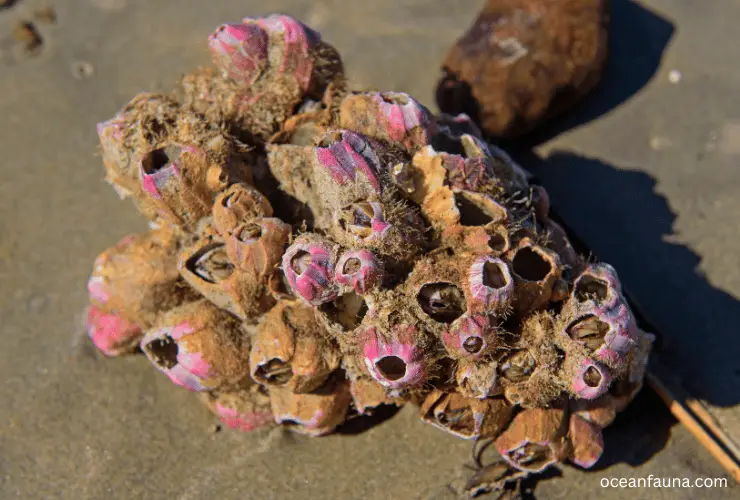
One such method is the use of specialized chemicals that can dissolve or break down the attachment points of the barnacles, allowing them to be easily removed. These chemicals can be applied directly to the affected area, either in liquid or gel form, and left to work for a set period of time before the barnacles are scraped off.
Another option for removing parasitic barnacles is the use of specialized tools that can blast the barnacles off the host surface using high-pressure water jets or air bubbles. These tools can be operated manually or remotely and are often used in conjunction with chemical treatments to remove all barnacles.
Other methods for removing parasitic barnacles from a host include using heat or freezing temperatures to weaken the attachment points of the barnacles, as well as using specialized organisms such as sea urchins or crabs that feed on the barnacles themselves.
Regardless of the method used, handling the removal process with care is important to avoid damaging the host organism. This involves selecting the appropriate tools and treatment methods and monitoring the host for signs of stress or injury during and after the removal process.
Conclusion
I hope it is clear to you now that while some barnacles can be parasites, not all of them are. In fact, there are even some parasitic barnacles within the marine ecosystem. Research in this area is ongoing.
However, if you have any questions regarding this, you may either comment below or mail us.

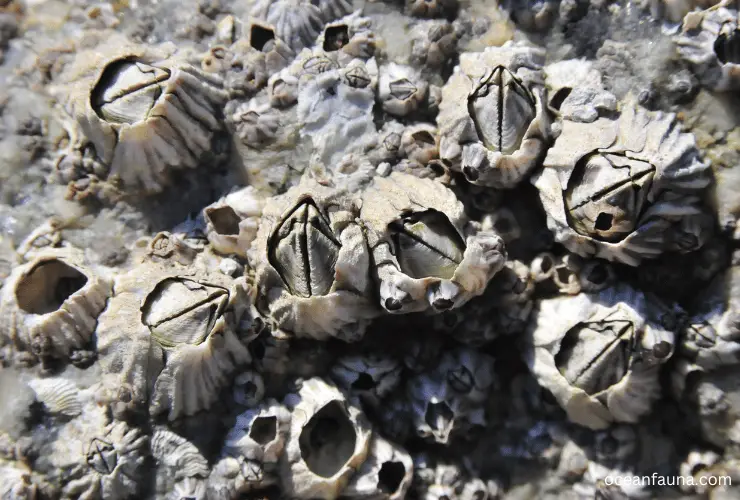
3 thoughts on “Are Barnacles Parasites? [Facts Explained]”